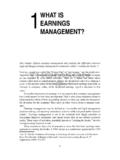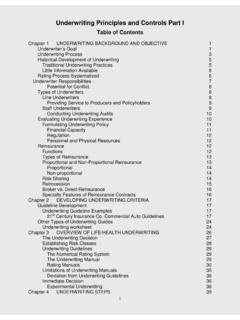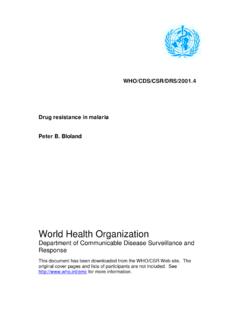Transcription of Mapping a process - Vanguard Scotland
1 Vanguard Education 1 Lean Tactics process Improvement process IMPROVEMENT Improving processes means thinking, measuring and working end-to-end; starting and finishing with your customers. These tactics provide frameworks and tools for improving process performance. Contents Page process improvement an overview 2 Mapping a process 3 Things to question about your processes 5 A better way to fight fires 7 Improving a fix 10 process improvement by comparing processes 11 When to standardise work 12 Barriers to expect 13 The dangers of process myopia 14 Other titles in the Lean Tactics services 17 Vanguard Education 2 Lean Tactics process Improvement process improvement - an overview process improvement - an overview Measure first Collect useful data - data that will tell you about how and how well the process performs.
2 Capability data -what is the process achieving predictably? Customer data - how well does the process delivers what matters to customers? Waste data - what waste occurs in the process ? Then: 1. Identify root causes of problems. 2. Develop possible solutions. 3. Act on a chosen solution, using measures to see if you were right. The best way to improve performance is to follow the check-plan-do cycle: Check = understand the what and why of current performance Plan = predict what measures will improve through taking your chosen course of action Do = do it - take action - as long as you have measures in place that relate to purpose, you will learn Vanguard Education 3 Lean Tactics process Improvement Mapping a process Mapping a process Bring together a group of people who work in a process .
3 Starting from any customer transaction: Draw a high level map of all of the activities (in sequence) that occur, all the way through the organisation from a customer demand and back to the customer. Two tips: 1. Always look end to end (start and finish with the customer). 2. Keep it high level - avoid getting into unnecessary details. As you map the process , look for: indications of current performance steps which add no value number of handovers errors duplication time taken (elapsed time Vs work time) checking/control bottlenecks ease of work-flow types of problems differences/commonality in demands made by customers (within the same process ) Vanguard Education 4 Lean Tactics process Improvement Mapping a process Apply crude within- process measures (how many, how often?)
4 As you go. At this time you are interested in the overall look and feel of the process . You can confirm your ideas and get into more detail if and when you need to. Involve others As you develop your map, get the team to verify what you are learning with other people in the process (and seek their views). Before you act Take measures that relate to purpose before you act for improvement.* * Useful resource: The Vanguard Guide to process Mapping and Analysis Vanguard Education 5 Lean Tactics process Improvement Things to question about your processes Things to question about your processes When your team has mapped a process , ask:* Are simple tasks being performed as a series of functional steps and by different people?
5 Would they be better done by one person? (Less backlog, sorting, errors, waste, time.) Are some tasks performed outside the process (in another function) that would be better performed in the process ? Are people able to handle all of the demand that arrives in this process and, if not, where do they have to send it? Is the process measured according to activity (usually inappropriate) or purpose? Do people in the processes use measures which help improvement? Do the tasks in the process satisfy customer needs or internal needs? How many handovers occur in the process ? Do they create waste? * Useful resource: Starting to question process in Lean Tactics: Getting Started Vanguard Education 6 Lean Tactics process Improvement Things to question about your processes Are people able to make decisions about the demands they deal with or do they have to refer things elsewhere?
6 Is all demand subject to the same process -how well does this meet customer requirements? Is the work performed where it makes most sense? How many checks and controls are there? Do they improve quality or create waste? List the things you learn about how well the process works. Vanguard Education 7 Lean Tactics process Improvement A better way to fight fires A better way to fight fires Fighting a lot of fires? Here is a better way to work to prevent fires: Consider the model below. There is work that has to be done as soon as possible (ASAP) and there is work that has to be done by a certain time. Work comes predictably or unpredictably. The four cells describe the sort of behaviour people engage in to deal with the different tasks: If things are predictable and have to be done immediately, you can establish procedures or routines for them.
7 Like doing the monthly accounts or dealing with common queries. If things are predictable and have to be done by a certain time, then you need people to project manage them. This means establishing what needs to be done, when it needs to be done by and organising resources accordingly. If things are unpredictable and have to be done by a certain time, the first thing that happens is that negotiation takes place to establish priority and find the necessary resources. Often the commitment of others must be obtained in order to have sufficient resources to tackle the task. When work arrives unpredictably and has to be tackled immediately then people have to fire-fight . Fire-fighting consumes enormous resources: managers who hope that new procedures will solve their fire-fighting problems are trying to move from fire-fighting to routines . This, in most cases, is like putting sticking plaster on an open wound.
8 Usually, it adds to the problem rather than solving it. Vanguard Education 8 Lean Tactics process Improvement A better way to fight fires Imagine a wall preventing any direct move from fire-fighting to routines. The only way to solve problems effectively is to take the other route around the model using negotiation and project management skills. Improvement starts with understanding. The behavioural logic is as follows: If you have lots of fires, the first questions to ask are type and frequency questions: How often does this happen? Do we have similar or many different problems? Can they be grouped in any way? Having established priorities for action, you should map the process to begin to establish where the problem originates. You should then involve the people who do the work in finding a solution to the problem: Ask: Do you know how often this problem occurs?
9 Do you do things here that might be affecting it? Would you like to get involved in helping solve it? Vanguard Education 9 Lean Tactics process Improvement A better way to fight fires With the co-operation of others you can establish process measures that will help everybody understand what s going on. Then you start to project manage the problem, monitoring progress against measures. As the problems get resolved and fire-fighting diminishes, you can then establish routines which you know will work. Vanguard Education 10 Lean Tactics process Improvement Improving fix Improving a fix my fixtake acti ontest actionagai nstmeasuresis itworking?yeskeepmonitoring asnecessarykeep improvingagai nstmeasuresnogo back tocheck Why do managers apply fixes ?
10 Sometimes because they think they know what s going on and they think they know the answer - what to do to fix it. If you can t be bothered to do more work on check or you feel you have the right answer ensure that you include measures in your fix , measures that will tell you if you are right! If you are wrong - if measures relating to purpose* are not improving - go back to check . * Useful resource: Lean Tactics: Understanding Your Organisation as a System Vanguard Education 11 Lean Tactics process Improvement process improvement by comparing processes process improvement by comparing processes When a number of departments or branches do the same work, compare the performance of their processes. Start with measures that tell you how well the process works (capability versus purpose, waste).
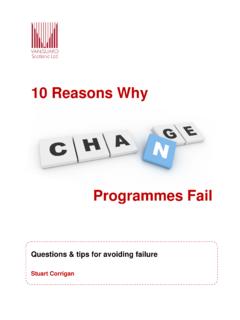

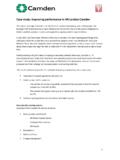

![arXiv:1705.08807v3 [cs.AI] 3 May 2018](/cache/preview/f/8/1/5/0/b/9/c/thumb-f8150b9c860139155c1b7712612d950a.jpg)
